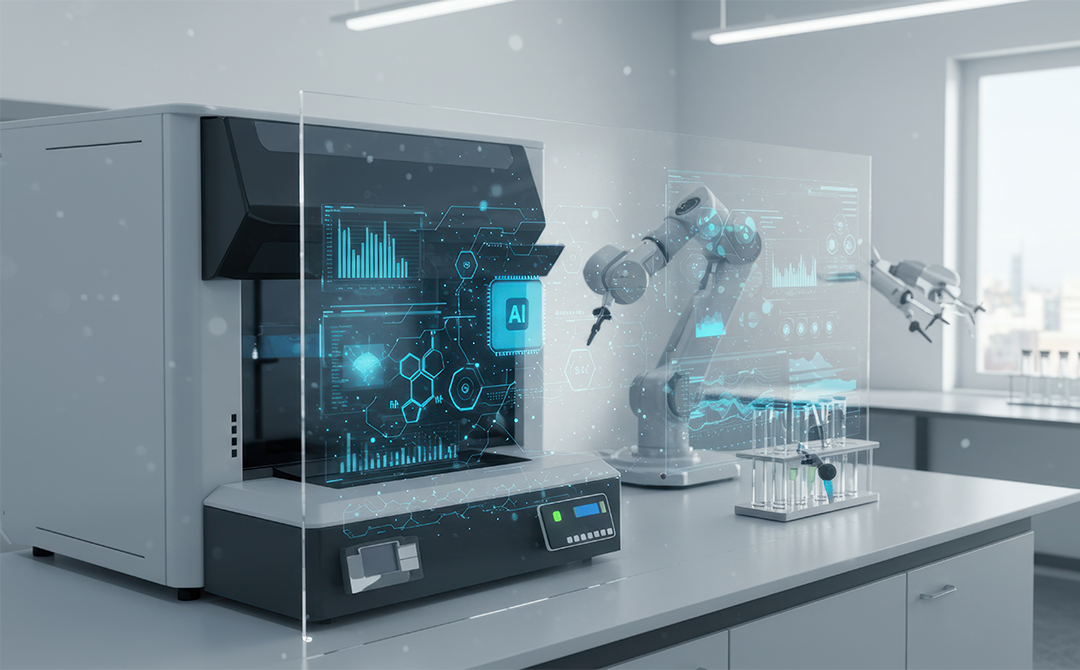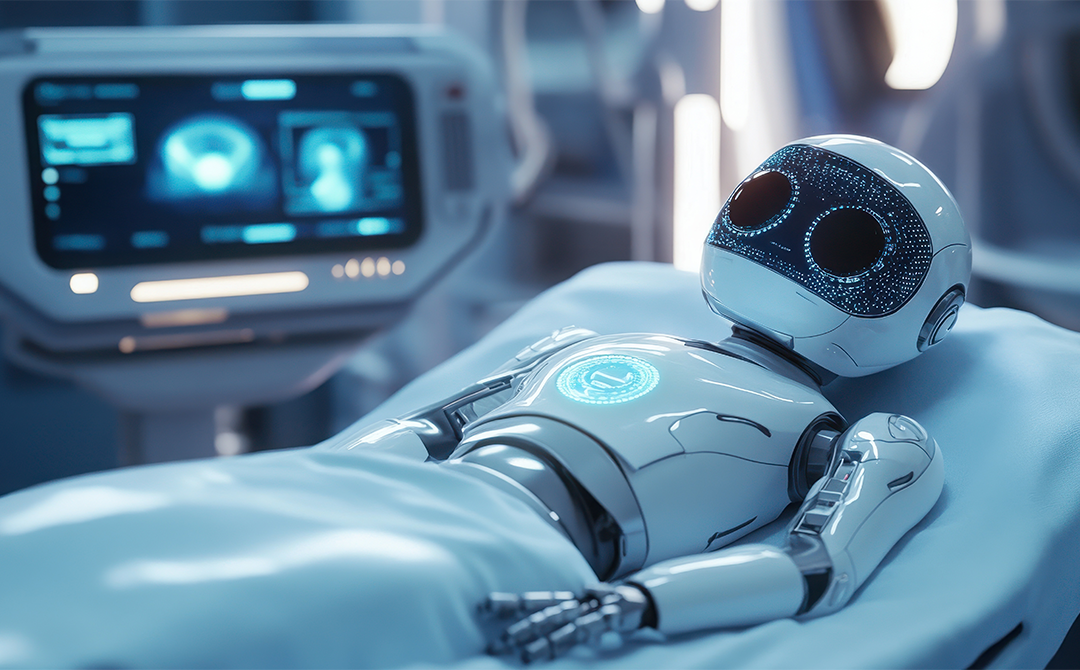
What is the scariest part of a disease?
Not knowing what’s happening!
For millions of people suffering from rare and complex diseases, the hardest part isn’t the treatment, it's figuring out what’s making them sick in the first place. Traditional diagnostic methods rely heavily on physician expertise, limited datasets, and time-consuming trial-and-error approaches. Patients often spend years in tests, misdiagnoses, and uncertainty. This is the harsh reality of millions suffering from rare diseases. In fact, the average total diagnosis time (TDT) for rare disease in patients is approximately 4.7 to 6 years. This includes both the time from symptom onset to the first medical contact and a confirmed diagnosis. But, what if AI could change this? With 4.5 billion people who lack access to essential healthcare services, AI Diagnostics could help bridge the gap. From detecting early signs of diseases to personalizing treatment plans, AI is revolutionizing diagnostics like never before. Source
But is AI the key to faster, more accurate diagnoses? Let’s find out.
Challenge of Rare Disease Diagnosis and AI’s Impact
-
Current Limitations in Traditional Diagnostic Methods: Symptoms of rare diseases can overlap with common illnesses. This complicates the diagnosis for healthcare professionals due to a lack of familiarity and experience. Traditional diagnosis relies heavily on pattern recognition, and the standard diagnostic tools and tests may not be tailored to detect the unique biomarkers or genetic mutations associated with these conditions. This further complicates the identification process.
-
Impact of Delayed Diagnosis: The journey to diagnose a rare disease patient is often lengthy. Without timely intervention, many rare diseases will progress, leading to irreversible damage and complications. These delays can render treatments less effective or may require specialized care that leads to a substantial financial burden to the patient.
-
Fragmented Healthcare Systems: Access to specialists knowledgeable about rare diseases is often limited, particularly in underserved or rural areas. This creates a scenario where the patient has to consult multiple healthcare providers and systems. Because of this, critical information about the patients may not be effectively shared among professionals. The complexity of fragmented systems delays diagnosis as patients have to undergo repetitive consultations and tests.
The Role of AI Diagnostics in Early Disease Detection
According to a study involving the frequency of diagnostic errors in outpatient care, it is found that diagnostic errors are estimated to affect at least 5% of US adults in outpatient settings, which translates to about 12 million people annually. Traditional prediction methods involve a prolonged process of symptom analysis, lots of tests and repeated consultations. This can lead to delays sometimes spanning years, which directly affects the patient’s outcome. In the case of rare diseases, the symptoms may mimic those of other diseases, leading to misdiagnoses or delayed diagnoses. With AI diagnostics, this process becomes easier and efficient. Source
a. Detecting Early Signs of Diseases:
AI, with the help of machine learning, utilizes predefined algorithms to analyse data, find anomalies that may sometimes be imperceptible to human clinicians. It identifies patterns and correlations that may indicate a higher risk of developing specific complex diseases or chronic conditions, such as diabetes or cardiovascular disease. These patterns are used to build predictive models that estimate the likelihood of an individual developing a chronic condition. For example, AI can predict the risk of developing type 2 diabetes based on factors like family history, BMI, and blood glucose levels. Individuals are stratified into different risk categories, allowing healthcare providers to prioritize interventions for those at highest risk.
Case Study:
A UK study has found that an AI tool can successfully detect 64% of epilepsy brain lesions previously missed by radiologists. Source
b. Predicting Infectious Disease Outbreaks:
AI systems can analyze epidemiological data from various sources, including weather patterns, global travel data, and local health records, to predict and monitor outbreaks of infectious diseases.
Case Study:
AI in Epidemic Outbreak Prediction: During the COVID-19 pandemic, AI-driven predictive models analyzed historical patient admission trends, epidemiological data, and emerging infection patterns to forecast potential hotspots. By predicting hospital capacity needs, AI optimized resource allocation by identifying areas where resources (ventilators, medical staff, medicines, hospital beds) were most needed during peak infection periods. In fact, Bluedot, a Canadian AI platform, analyzed global airline ticketing data and news reports to detect and predict the spread of infectious disease in Wuhan, China, days before the WHO’s first alert. Also, AI models utilized diverse data sources, including social media activity, internet search trends, and wearable device metrics, to capture early signs of outbreaks and enhance real-time disease surveillance. Source
AI Diagnostics with Generative AI
Generative AI models designed for medical analysis feature advanced techniques like convolutional neural networks (CNNs) and various deep learning frameworks to analyze unstructured data such as patient health records, medical images, audio recordings of consultations, etc, to produce new content similar to what it is being trained on.
a. Advanced Diagnostic Imaging:
Techniques such as Generative Adversarial Networks (GANs) are used to enhance the clarity of images from modalities like MRI and CT scans. This allows the radiologists to analyze the reports more clearly and accurately diagnose the conditions. Also, Gen AI automates the segmentation of organs to identify subtle patterns or abnormalities in medical images. AI systems can be trained on extensive datasets that include rare disease conditions, enabling them to perform better risk assessment and suggest these conditions as potential diagnoses, and differentiate between normal and pathological conditions. This facilitates early detection and intervention for improved patient outcomes.
Case Study:
-
AI diagnoses endometrial cancer with 99.26% accuracy. Endometrial cancer is the most common gynecological cancer in Australian women. The AI model named ECgMPL analyzes histopathological images, i.e. microscopic tissue images used in disease analysis. It enhances image quality, identifies critical areas, and performs tissue analysis to achieve its high accuracy. It also rivals the performance of human pathologists, offering a more consistent and objective assessment. The same AI approach has shown promising results in detecting other cancer types, such as 98.57% for colorectal cancer, 98.20% for breast cancer, and 97.34% for oral cancer. Source
b. Drug Discovery:
DYK, the process of new drug development costs an average of $1 billion to $2 billion, which also includes failed drugs. Compared to the traditional methods, AI can reduce the time taken to synthesize and screen new drugs, thus reducing the costs in the research process by $26 billion annually. Source
AI applications can accelerate drug discovery by,
-
Designing new compounds with desired properties that can be tested in computer simulations. This accelerates the identification of promising molecules for further development.
-
Predicting the properties of novel drug molecules and forecasting potential drug interactions. This can be used to evaluate their safety and the side effects of combining medications.
-
It can also be used in drug repurposing by identifying novel applications for existing medications and predicting their efficacy against different diseases.
C. Personalized Treatment Planning:
AI can create personalized treatment care plans, predict patient needs, and optimize healthcare delivery based on an individual's medical history, real-time data, and provider insights. It gathers patient data from electronic health records (EHRs), wearable devices, provider notes and lab results. It uses machine learning, NLP, and predictive analytics to identify patterns, detect risks, and recommend personalized interventions. It also adjusts treatment recommendations dynamically based on new patient data, provider feedback, and patient response to treatment.
Case Study:
Tredence developed an AI-powered Advanced Care Plan model (Azure GPT 3.5 Turbo) that analyzes provider notes, integrates past care plans, and generates accurate, HIPAA-compliant care plans for patients in real time. This AI-driven approach reduces the time spent on documentation, improves standardization, and ensures continuously updated, patient-centered care plans. Within just a month, the MVP solution streamlined workflows, enabling healthcare professionals to focus more on patient interactions rather than administrative tasks, ultimately improving patient outcomes and communication across care teams.
Agentic AI Diagnostics - Is It The New Leap?
Agentic AI represents a significant Leap Forward from traditional AI systems. Conventional AI tools in Healthcare follow pre-determined paths, while Agentic AI systems possess autonomous decision-making capabilities. They can understand the objectives, formulate plans and take independent decisions to achieve goals while aligning with human values and medical protocols.
a. Agentic AI in Diagnostics
According to a report, despite the staggering amount of healthcare data generated annually, 97% of it is unused. This is because the outer systems are incapable of processing large-scale multimodal data. This inefficiency forces healthcare professionals to manually sift through this vast amount of information to get insights, which puts immense pressure on healthcare professionals to make accurate decisions in limited timeframes. Source
Agentic AI is paving the way for autonomous diagnosticians, which are capable of performing diagnostic tasks with minimal human intervention. These AI agents can analyze the patient histories, laboratory results and imaging studies and suggest potential diagnoses. This enhances the efficiency and accuracy of medical diagnostics, supporting clinical decisions. World Health Forum says, AI diagnostics hold the potential to enhance efficiency, reduce costs and improve health outcomes globally. Source
Case Study:
Across the Atlantic, the UK’s National Health Service (NHS) is integrating AI into breast cancer screenings. Nearly 700,000 women enrolled in the program, which pits agentic AI against the traditional mammogram review process. It examines past medical cases, adjusts its detection criteria in real-time, and can even learn from radiologists’ feedback.
b. Precision Medicine:
Healthcare is always personal. It is never a one-size-fits-all approach but tailored to a person’s lifestyle, genes and unique biological markers. Agentic AI is making this tangible!
-
With Agentic AI-powered geonomics, AI agents analyze genetic, historical, contextual patient data, patients' lifestyle factors and responsiveness to previous treatments, predict potential health risks and recommend proactive interventions.
-
AI agents can generate personalized risk evaluations for diseases, forecast the results of treatment, and optimize drug dosages.
-
Agentic AI optimizes administrative and clinical workflows, right from scheduling to allocation, optimally utilizing the resources.
-
AI-integrated wearables are transforming patient monitoring. Devices track patients' health in real time and can alert doctors to subtle changes like an irregular heartbeat, a spike in sugar levels, or an increase in blood pressure. These interventions can be predicted long before they turn into a full-blown medical crisis.
Case Study:
AI-driven clinical insights: Navina developed an AI-driven platform that integrates with EHR systems to provide clinical insights, flag potential diagnoses, identify risk factors, and spot medication conflicts. The platform is currently utilized by 1,300 US-based clinics, offering substantial improvements in care quality and outcomes by managing and analyzing patient data efficiently.
AI in Streamlining the System
Apart from the AI diagnostics, AI is particularly very helpful in administrative tasks that has burdened the providers and patients. This can free up the administrative burden on healthcare workers, which, according to HealthAffairs, accounts for 15% - 30% of overall spending. Source
Case Study:
Tredance collaborated with a leading dental support organisation to address the challenge of disparate practice management and electronic medical record systems across multiple clinics. By developing a unified data platform that consolidates clinical, practice, accounting and marketing data, enabling timely insights and data-driven decision making. This outcome improves operational efficiency and provides real-time data across 7 different practice management systems and 50+ clinics.
Challenges in AI Adoption
AI in healthcare enables faster diagnoses, better outcome predictions, and personalized treatments. But with great power comes great responsibility - and some serious challenges.
Let’s explore these challenges and what they mean for the future of healthcare.
Mitigating Algorithmic Bias:
AI systems learn from the data they are trained on. If the training data contains biases such as favoring particular perspectives or reflecting historical inequalities, the AI can absorb and replicate those biases in its outputs. Addressing these biases is critical to ensure equitable healthcare delivery
Transparency:
Many AI Algorithms in healthcare lack transparency and function as “black boxes”. AI systems analyze data and generate recommendations, but the decision-making process behind those outputs remains a mystery! So, the healthcare professionals find it difficult to understand how AI arrives at conclusions, unable to assess the validity of it’s recommendations.
Ethical Considerations:
The lack of transparency hinders accountability. If an AI-driven decision results in a negative outcome, it’s difficult to find out the reason or hold the system responsible for it. This ambiguity raises significant ethical questions and hinders its integration into the healthcare system.
Data Security and Privacy Concerns
The healthcare industry handles a vast amount of sensitive patient data, which makes it a prime target for cyberattacks. Data breaches can be severe, leading to misusing patient data for financial gain and identity theft. Healthcare organizations must comply with HIPAA to protect patient privacy and stay up-to-date with the latest regulatory requirements. Adopting robust data security measures safeguards sensitive data against breaches.
The Future of AI Diagnostics
The integration of data science in medicine is unlocking patterns and insights that were once invisible to traditional diagnostic methods. The global agentic AI in Healthcare Market is expected to grow at a CAGR of 45.6% from 2025 to 2030! AI diagnostics is accelerating fast by its ability to identify key genomic biomarkers, facilitating timely and targeted treatments. This integration is also enhancing operational efficiency within healthcare facilities, optimising resource allocation and improving patient care. Source
The rapid evolution of AI in Healthcare necessitates proactive engagement from the Government and regulatory bodies to address the challenges. Organisations like the FDA (Food and Drug Administration) and WHO (World Health Organization), developing comprehensive guidelines to deal with the complexities of AI involving documentation, transparency, risk management and data quality to ensure that the AI systems are effective, ethical and safe.
Final Thoughts
As AI continues to evolve, the role of data science in medicine becomes increasingly pivotal in decoding rare and complex diseases with precision. Realizing this potential for your organization requires collaboration with experienced partners who can streamline AI implementation.
Tredance is your global data science solutions provider, specializing in bridging the gap between insight creation and value realization in healthcare. Our Healthcare Analytics, HealthEM.AI, offers you scalable solutions that simplify practice management and enhance strategic decision-making by managing the full data lifecycle. Harness AI’s full potential to ensure improved patient outcomes and streamlined operations.
Explore how Tredence can support your journey towards AI-driven healthcare now!
FAQs
-
How is AI improving diagnostics for rare and complex diseases?
AI enhances diagnostics by analyzing vast datasets, identifying patterns, and providing faster, more accurate disease detection. Machine learning models assist in early diagnosis, reducing misdiagnoses and improving treatment strategies.
-
How can AI diagnostics impact healthcare costs and financial planning?
AI diagnostics reduce misdiagnoses, minimize unnecessary tests, and optimize resource allocation, leading to lower operational costs. This enables better financial forecasting, cost efficiency, and improved ROI on healthcare investments.
-
How can AI-powered diagnostics integrate with existing healthcare systems?
AI solutions integrate via cloud-based platforms, APIs, and electronic health records (EHRs), enhancing interoperability and enabling seamless data exchange between healthcare providers.

AUTHOR - FOLLOW
Editorial Team
Tredence




